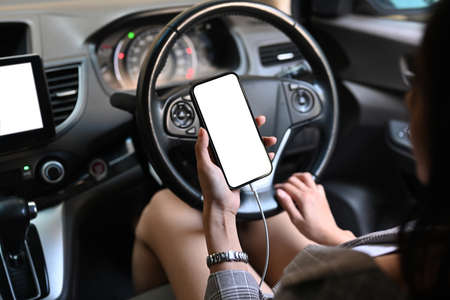1. Introduction
Smartphone integration has revolutionized the way drivers interact with their vehicles, significantly impacting traditional infotainment systems. With the rapid advancement of mobile technology, modern cars are now designed to seamlessly connect with smartphones, offering users enhanced convenience, customization, and accessibility.
Overview of Smartphone Integration in Vehicles
Smartphone integration allows drivers to connect their mobile devices to their vehicle’s infotainment system, enabling access to navigation, music streaming, hands-free calling, and messaging. This is primarily achieved through popular platforms such as Apple CarPlay and Android Auto, which provide a familiar and user-friendly interface.
How Smartphone Integration Works
Most modern vehicles come equipped with infotainment systems that support smartphone connectivity via USB or wireless connections. Once connected, the smartphones interface is projected onto the cars display, enabling interaction through the touchscreen, voice commands, or steering wheel controls.
Key Features of Smartphone Integration
| Feature | Function |
|---|---|
| Navigation | Real-time GPS guidance with apps like Google Maps or Apple Maps |
| Music Streaming | Access to Spotify, Apple Music, and other audio apps |
| Hands-Free Calling | Make and receive calls using voice commands |
| Messaging | Send and receive texts through voice-to-text functionality |
| Voice Control | Use Siri or Google Assistant for a hands-free experience |
Influence of Smartphone Integration on Traditional Infotainment Systems
As smartphone integration becomes more advanced, traditional infotainment systems are facing challenges in maintaining their relevance. Built-in vehicle systems often struggle to match the flexibility and up-to-date features provided by smartphones. This has led many automakers to prioritize compatibility with external devices rather than relying solely on proprietary software.
Overall, the growing reliance on smartphone integration is reshaping the in-car experience, making driving more connected and efficient. As this trend continues, the role of traditional infotainment systems may shift towards acting as a bridge rather than a standalone solution.
2. The Rise of Smartphone-Based Infotainment
As smartphones have become an essential part of our daily lives, their integration into vehicles has significantly changed the way drivers interact with infotainment systems. Traditional built-in infotainment systems are increasingly being replaced or supplemented by smartphone-based solutions like Apple CarPlay and Android Auto, offering a more familiar and streamlined user experience.
How Smartphone-Based Infotainment Systems Work
Apple CarPlay and Android Auto allow drivers to connect their smartphones to their car’s display, giving them access to apps and features in a safer, more intuitive way. These systems replicate the smartphone interface on the vehicle’s screen, allowing users to control navigation, music, messaging, and phone calls through voice commands or a simplified touchscreen interface.
Key Features of Apple CarPlay and Android Auto
| Feature | Apple CarPlay | Android Auto |
|---|---|---|
| Navigation | Apple Maps, Google Maps, Waze | Google Maps, Waze |
| Music Streaming | Apple Music, Spotify, Pandora | YouTube Music, Spotify, Pandora |
| Voice Assistance | Siri | Google Assistant |
| Messaging Apps | iMessage, WhatsApp | Google Messages, WhatsApp |
| Third-Party App Support | Limited | More extensive |
Why Drivers Prefer Smartphone-Based Systems
Many drivers prefer Apple CarPlay and Android Auto over built-in infotainment systems due to their ease of use, seamless integration with their smartphones, and regular updates. Unlike factory-installed infotainment systems, which may become outdated over time, smartphone-based systems are continuously improved through software updates, ensuring users always have access to the latest features and security enhancements.
The Shift Away from Built-In Infotainment
Automakers are recognizing the demand for smartphone-based infotainment and are adapting their vehicle designs to accommodate these systems. Some brands now offer vehicles with minimal or no built-in infotainment features, instead relying on users to connect their smartphones for navigation and entertainment.

3. Advantages of Smartphone Integration
Seamless Connectivity
One of the biggest advantages of smartphone integration in vehicles is the seamless connectivity it provides. With Apple CarPlay and Android Auto, drivers can connect their phones effortlessly via USB or wireless connections. This eliminates the need for bulky cables and outdated infotainment interfaces, ensuring instant access to apps, navigation, and media.
Frequent Updates
Unlike traditional infotainment systems that rely on periodic software updates from automakers, smartphone integration provides continuous improvements through regular app and operating system updates. This ensures that drivers always have access to the latest features, security patches, and interface enhancements without waiting for manufacturer updates.
Comparison: Traditional vs. Smartphone-Based Infotainment Updates
| Feature | Traditional Infotainment | Smartphone Integration |
|---|---|---|
| Update Frequency | Infrequent, requires dealership visit | Frequent, automatic updates via phone |
| New Features | Limited to manufacturer updates | Regular improvements via app/software updates |
| Security Fixes | Slow, may take years | Fast, delivered via smartphone OS updates |
Enhanced User Experience
Smartphone integration significantly improves the user experience by providing a familiar interface that drivers are already accustomed to. Since smartphone apps are more intuitive and regularly updated, they offer better performance compared to traditional infotainment systems. Features like voice recognition, real-time navigation updates, and personalized playlists further enhance the driving experience, making car technology feel more like an extension of the smartphone.
4. Challenges for Traditional Infotainment Systems
As smartphone integration becomes more advanced, traditional infotainment systems face several challenges that automakers must navigate. These difficulties include software obsolescence, functionality limitations, and shifting customer preferences.
Software Obsolescence
One of the biggest hurdles for traditional infotainment systems is software obsolescence. Unlike smartphones, which receive frequent updates and improvements, in-car infotainment systems often run on hardware that remains unchanged for years. This leads to outdated user interfaces, slower performance, and a lack of support for newer applications.
The following table highlights key differences in software updates between traditional infotainment systems and smartphone software:
| Feature | Traditional Infotainment | Smartphone Software |
|---|---|---|
| Update Frequency | Infrequent, often tied to dealership visits | Regular updates, often over-the-air (OTA) |
| App Compatibility | Limited to pre-installed apps | Expands with new app releases |
| Performance Optimization | Rare, may become sluggish over time | Continuously improved through updates |
Functionality Limitations
Automakers also struggle to match the functionality offered by smartphones. Traditional infotainment systems lack the flexibility of smartphones, which provide users with a wide range of entertainment, navigation, and communication features.
User Experience
Many in-car systems have more complex interfaces, making them harder to use compared to the intuitive design of smartphone-based solutions like Apple CarPlay and Android Auto. Slow touch response and limited customization options make them less appealing to tech-savvy drivers.
Connectivity Issues
Built-in systems often face connectivity issues, with limited internet access and fewer cloud-based features compared to constantly connected smartphones. This prevents seamless streaming, real-time map updates, and voice assistant functionalities.
Customer Preferences
As consumers increasingly rely on their smartphones for daily tasks, their expectations for in-car technology have shifted. Many drivers now prefer to use their phones for navigation, music streaming, and communication rather than engaging with the in-car infotainment system.
Growing Demand for Smartphone-Based Systems
Customers value convenience and continuity across their devices. Smartphone integration ensures a familiar experience, whereas traditional infotainment systems often require learning a different interface with fewer features.
Reduced Willingness to Pay Extra
Many automakers previously charged high premiums for factory-installed navigation or entertainment packages. However, with smartphone capabilities providing these services for free or at lower costs, customers are less inclined to pay for these in-car features.
5. Five. The Future of In-Car Infotainment
As smartphone integration continues to reshape the automotive industry, automakers are exploring new ways to evolve in-car infotainment systems. The competition between built-in infotainment systems and smartphone-based solutions like Apple CarPlay and Android Auto has pushed car manufacturers to rethink their strategies. In this section, we explore predictions on how automakers may adapt to these changes.
Enhanced Native Infotainment Systems
To compete with smartphone integration, automakers are likely to enhance their native infotainment systems by offering more intuitive interfaces, faster processing speeds, and seamless connectivity. This would help improve user experience while reducing reliance on external smartphone software.
Deeper Smartphone Ecosystem Integration
Some manufacturers may choose to integrate even further with smartphone ecosystems rather than competing against them. This could include direct support for mobile apps, cloud-based services, and AI-powered assistants like Siri, Google Assistant, or Alexa.
Subscription-Based Connected Services
Manufacturers might introduce subscription-based services that provide exclusive infotainment features, such as real-time navigation updates, in-car streaming, and personalized content recommendations.
Comparison of Potential Infotainment System Strategies
| Strategy | Advantages | Challenges |
|---|---|---|
| Enhanced Native Systems | Faster performance, better integration with vehicle functions | High development costs, potential lag in software updates |
| Deeper Smartphone Integration | Seamless user experience, utilizes familiar smartphone ecosystems | Potential loss of brand identity, reliance on third-party software |
| Subscription-Based Features | New revenue streams, premium user experiences | Consumer resistance to paying for features already available on smartphones |
The Role of AI and Personalization
AI-driven personalization is expected to play a significant role in future infotainment systems. Features like voice recognition, predictive navigation, and personalized media recommendations will enhance convenience for drivers and passengers.
The Transition to Fully Connected Vehicles
As technology advances, automakers may increasingly focus on fully connected vehicles. This could mean deeper software integration, over-the-air (OTA) updates, and compatibility with smart home ecosystems.
Conclusion
Automakers have several paths forward in the evolution of infotainment systems. By enhancing native capabilities, increasing smartphone integration, or offering premium services, the automotive industry can stay competitive in the ever-evolving tech landscape.


